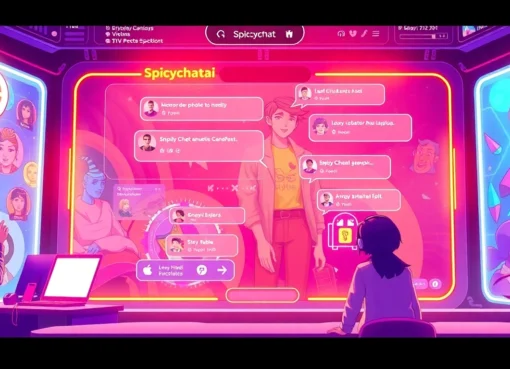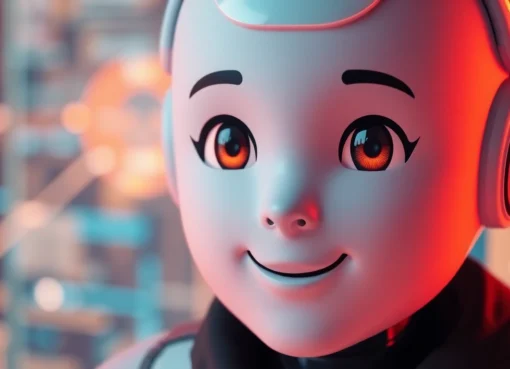Unlocking the Power of AI Chatbots: Your Guide to Building Immersive, Customizable AI Conversations

Introduction to Building Your Own AI Chatbot Using Cursor
In recent years, the landscape of artificial intelligence has expanded rapidly, bringing about innovative ways for individuals and businesses alike to engage with technology. Among the most popular applications is the development of AI chatbots, which serve as virtual assistants, companions, or even creative storytellers. For newcomers eager to dive into this world, the question often arises: how do I build my own chatbot using Cursor, the versatile IDE for coding? This comprehensive guide aims to demystify the process, explore the latest trends, and equip you with the knowledge needed to create a functional, engaging AI chatbot tailored to your needs.
Understanding AI Chatbots: What They Are and How They Function
Defining AI Chatbots
At their core, AI chatbots are computer programs designed to simulate human conversation. They utilize natural language processing and machine learning algorithms to interpret user inputs and generate coherent, contextually relevant responses. Unlike simple rule-based chatbots that follow predefined scripts, modern AI chatbots learn from vast datasets, enabling them to handle complex queries, adapt to user preferences, and even engage in storytelling or role-play scenarios.
The Underlying Principles of AI in Chatbots
The foundational technology behind AI chatbots includes models like GPT , Claude, and other large language models . These models are trained on extensive text corpora, allowing them to predict the next word or phrase based on the input they receive. Key components involved in their functioning include:
- Natural Language Understanding : Allows the chatbot to comprehend user intent and extract relevant entities.
- Natural Language Generation : Enables the chatbot to produce natural, human-like responses.
- Dialogue Management: Maintains context over multiple exchanges, ensuring coherent conversations.
While the technical underpinnings can be complex, modern platforms and tools simplify the process, especially for those using development environments like Cursor.
The Evolution of AI Chatbot Technology in 2024
From Basic Scripts to Advanced Models
The journey of AI chatbots has been remarkable. Early versions were limited to scripted responses, but by 2024, the field has embraced sophisticated models like GPT-4o mini, Claude 3.7 Sonnet, and Ultra Claude 3.5 Sonnet. These models are fine-tuned for specific tasks, including emotional storytelling, roleplaying, and unfiltered content creation, offering unprecedented levels of realism and expressiveness.
Emergence of Dynamic and Unfiltered Content
Unlike many platforms that restrict adult or NSFW content, some, like Crushon, support unfiltered, dynamic storytelling, allowing for richer interactions. This has opened new avenues for immersive roleplay, emotional engagement, and creative expression, while also raising important ethical considerations about responsible usage.
Increased Accessibility and Customization
Platforms now offer a variety of models tailored for different purposes—be it casual chatting, coding assistance, or adult content. This diversification ensures users can select or even fine-tune models to suit their specific needs, often with minimal technical expertise.
Comparing Popular Platforms for AI Chatbots
DeepAI and QuillBot
DeepAI provides an accessible interface for creating and using AI chatbots that write stories, code, and messages. QuillBot offers a free AI chat experience with large language models capable of conversational tasks and creative writing. Both platforms are user-friendly but differ in customization options and content policies.
Chatbot App and ChatBox AI
These applications emphasize seamless user experiences, supporting multiple AI models, including GPT-4o mini and Google’s Gemini. They cater to both casual users and professionals seeking reliable, fast responses for writing, brainstorming, or problem-solving.
Specialized and Niche Platforms
Platforms like Julius AI and Zapier focus on long-form content generation, automation, and integration with other tools. Meanwhile, Reddit discussions highlight community preferences and experiences with various AI chat platforms, emphasizing the importance of choosing the right tool for your specific goals.
Building Your Own AI Chatbot with Cursor: Step-by-Step Guide
Prerequisites and Setup
Before diving into development, ensure you have the following:
- An active Cursor account with access to its coding environment.
- Basic programming knowledge, especially in Python, JavaScript, or other supported languages.
- Access to API keys for AI models such as GPT-4, Claude, or others.
The setup involves configuring your development environment, installing necessary libraries, and obtaining API access from AI providers.
Choosing the Right AI Model
Depending on your intended functionality—whether simple chat, roleplay, or advanced storytelling—you should select an appropriate AI model. For example, Ultra Claude 3.5 Sonnet is excellent for emotional and dramatic interactions, while GPT-4o mini offers speed and accuracy for coding and general conversation.
Designing the Conversation Flow
Planning the dialogue structure is crucial. Map out typical user interactions, potential responses, and fallback options. Utilize Cursor’s scripting capabilities to manage context, handle errors, and ensure smooth transitions between conversation states.
Implementing API Calls in Cursor
Using Cursor’s code editor, you can write scripts to interact with AI APIs. For example, in Python, you might use the requests library to send user prompts and receive responses:
import requests
api_key = 'your_api_key_here'
endpoint = 'https://api.openai.com/v1/engines/gpt-4/completions'
def get_response:
headers = {
'Authorization': f'Bearer {api_key}',
'Content-Type': 'application/json'
}
data = {
'prompt': prompt,
'max_tokens': 150,
'temperature': 0.7
}
response = requests.post
return response.json()['choices'][0]['text'].strip()
Adjust parameters like max_tokens and temperature to fine-tune response length and creativity.
Adding Visual and Emotional Elements
To enhance interactivity, incorporate image replies or visual cues that match the character’s tone. For instance, if your chatbot is an AI girlfriend, images reflecting mood, body language, or setting can deepen immersion. Crushon’s platform supports such features, enabling you to create multi-sensory storytelling experiences.
Advanced Features for Elevated AI Interactions
Utilizing Multiple AI Models
Mixing and matching models can offer richer interactions. For example, using Claude for emotional dialogue and GPT-4 for technical explanations allows your chatbot to excel across varied topics. Cursor’s environment supports seamless integration of these models, providing flexibility for complex projects.
Implementing Context and Memory
Maintaining context is essential for coherent conversations. Use persistent variables or databases within Cursor to remember user preferences, previous interactions, or story details. This makes interactions more natural and personalized.
Creating Unfiltered and Dynamic Storytelling
Platforms like Crushon push the boundaries by supporting unfiltered content and dynamic storytelling. You can craft scenarios where your AI character responds without heavy restrictions, enabling genuine emotional expressions, humor, or adult-themed narratives. Remember, responsible usage and adherence to ethical standards are vital when deploying such features.
Ethical Considerations and Responsible Usage
Content Policies and User Safety
While unfiltered AI interactions offer creative freedom, they also pose risks related to inappropriate content or misuse. Developers should implement safeguards, clear usage policies, and monitor interactions to prevent harm or exploitation.
Respecting Privacy and Consent
When designing AI chatbots for personal or adult use, prioritize user privacy. Secure API keys, anonymize data, and avoid collecting unnecessary personal information. Transparent communication about data usage fosters trust.
Legal and Regulatory Compliance
Stay informed about evolving laws regarding AI-generated content, especially in regions with strict regulations around adult or NSFW material. Ensuring compliance helps prevent legal issues and promotes ethical AI development.
The Future of AI Chatbots and Immersive Interaction
Emerging Technologies and Trends
The next wave of AI chatbots promises even more immersive experiences, with advancements in multimodal interactions—combining text, images, voice, and video. Enhanced emotional intelligence and context-awareness will make AI companions indistinguishable from human interlocutors in certain scenarios.
The Role of Customization and Personalization
Future platforms will offer greater customization, allowing users to craft unique personalities, backgrounds, and interaction styles for their AI characters. This personalization fosters deeper engagement and emotional bonds.
Ethical AI and Responsible Innovation
As AI capabilities grow, so does the responsibility to develop ethically sound applications. Developers will need to balance innovation with safeguards to prevent misuse, ensure fairness, and respect user rights.
Conclusion: Unlocking the Power of AI Chatbots
Building your own AI chatbot may seem daunting at first, but with the right tools, guidance, and ethical considerations, it becomes an achievable and rewarding endeavor. Whether you aim to create a friendly assistant, an emotional storytelling partner, or an adult-themed character, the possibilities are vast and continuously expanding. Platforms like Cursor empower you to script, customize, and innovate in ways that were once unimaginable. As technology advances, so does the potential for more immersive, intelligent, and emotionally rich AI interactions. Embrace this exciting frontier, and start crafting your own digital conversationalist today.


